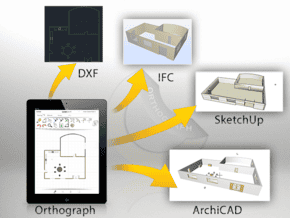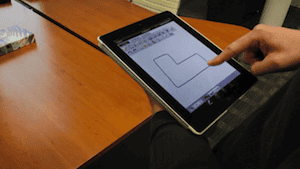I talk a lot about the future of practicing architecture. I’m really interested in how our tools and processes evolve. I am curious about what common frustrations we will soon no longer need to deal with. A lot of these changes are subtle. Others are a bit more overt. Here’s one example that comes to mind: the switch from film to digital cameras when photographing existing site conditions. Are you old enough to remember the old ways? I am. Yes, my first internship involved film cameras AND hand drafting. I don’t miss those days. Hoping you brought enough film; being parsimonious with which photos you take; going from the job site to a one-hour photo place and hoping that your pictures don’t suck, or get developed poorly. Or praying that you aren’t missing a critical shot. Did you ever forget to bring film, or extra batteries? I’d rather not remember when I did that. #internproblems.
Now think about what came next: a digital camera. You could take tons more photos. The first memory cards were small, but still you could take a hundred photos and review them on site. Pretty nice. But then the cameras got better and the memory cards got bigger (well they physically got smaller, but stored more). I don’t know about you, but I started taking HUNDREDS of photos. For a 2,000 square foot house, I might take 400 pictures. Why not? The camera had the space and it felt so good back in the office when I found out I DID photograph the one thing I forgot to measure. Needless to say, I’ve become a pro at measuring off photos (hint: always take photos flat on so that dimensions aren’t distorted and you can use one known dimension to calculate another one).
The digital camera was great, but now our phones are better. I currently take photos with my phone instead of a dedicated camera. Why not? I can then e-mail them, my phone has decent battery power and good resolution, I always have my phone on me, etc.
What’s next? All we’ve done is digitize an old process. It’s faster, more reliable, easier to sort and share, but in the end it’s still the same: photos detached from the other documents (scribbled plans and dimensions on paper). There needs to be a better way. OrthoGraph Architect 3D v7 gives us one answer. Instead of taking a photo with your phone, why not use your iPad? And instead of putting that photo in some generic folder, why not link it to the digital as builts you are working on? Seems like a nicer solution to me.
We’ve come a long way from film and pencils
 Are you familiar with Orthograph Architect? I’ve written about this iPad app before. I’ve also dreamed a little about all its potential. Check those posts out.
Are you familiar with Orthograph Architect? I’ve written about this iPad app before. I’ve also dreamed a little about all its potential. Check those posts out.
The makers of OrthoGraph Architect 3D want to give away a free copy of their software to two of my readers. If you want a chance to win a free copy, leave a comment about how you’d use OrthoGraph Architect 3D or how you’d like to see our tools evolve. If you’re shy, you can send me an e-mail with your thoughts instead.
I’ll randomly select the two winners, probably by assigning everyone a number and rolling the appropriate sided dice. Because I can be dorky sometimes. I’ll accept comments and e-mails for this give away until Midnight, Boston time on September 2nd, 2013.
Read about the latest version of OrthoGraph Architect, click here. And please, subscribe to my blog to read more about the tricky world of being an Architect in the 21st century: Shoegnome on Facebook, Twitter, and RSS feed.

16 thoughts on “From Film to Digital Cameras & a Free Copy of OrthoGraph Architect 3D v7”
I still remember using the early digital cameras that wrote to a 3.5″ floppy disk. I feel like it was ages ago, but really only 13 years! Amazing how rapidly technology evolves.
I’ve been procrastinating on documenting my own house for future records/additions, etc. I’d probably make that my first project for Othrograph to acclimate myself.
Does Orthograph have input options for structural documentation as well? We recently had a project where we were re-using and adding a major addition to an existing factory structure. A detailed survey of the steel structure was invaluable throughout the design process. I’d love to see that kind of functionality added in some way.
As for future tools:
1. In the movie Prometheus, the survey team has floating orbs that fly through a structure and create 3D a 3D model of it via laser/x-ray scanning. I wouldn’t mind one or two of those!
2. A full virtual environment that could incorporate virtual occupation of a space. I can’t see this as being too far off either. Rather than using a mouse and keyboard to create a wall in space, I imagine existing within the virtual environment and pushing and pulling with physical gestures to create the building around you (cue dramatic symphony music in the background).
Scott, I know Orthograph can include background images, but I don’t think it yet has model importing options. I love your ideas for future tools. Oddly enough I have a post started about point 1, the working title is “When is your architecture firm going to buy a drone?” I bet that time is close at hand. Well maybe not for architecture firms. But for contractors. And 2, definitely. I tihnk though the interface will be more focused on voice controls. I think of that video from last year with the guy building a city for his wife. They only show him working on little things. I’d imagine saying “array, stone, brick, etc.” would be faster than scrolling through a floating drop down. Though I think it’d be awesome to work like that and change scales. So sometimes the door handle is normal sized, other times it’s the size of your arm. Sometimes the building is full size, other times the whole neighborhood can be stepped over. THAT would be crazy awesome.
Bummer that orthoGraph is not on Android too. Do they have any plans to do so?
I’m not 100%, but my hunch is not anytime soon. I could be wrong though.
Well, it depends on the definition of soon 🙂 We are working on an Android version, but that is a huge work, so do not expect it before December. We are in an early stage of the project, and there are many unclear things which can cause problems during the development, but at least we have started working on that.
I think knowing that you’re working on it qualifies it as “soon”. Maybe we can say “no release date scheduled, but under development”. And by the way, very excited to hear that an android version is in the works. I am a very big fan of multiple platform solutions!
It looks like Orthograph has progressed nicely since I played with the first version. I especially like the ability to add rooms without redrawing common walls.
Does anyone know if you can lock corners at 90deg? Under most circumstances I want to force rooms to be rectangular and rationalize their dimensions even if they are slightly off in the real world. So instead of entering wall dimensions I usually prefer the clear length x width, or better yet measure the overall footprint and fit rooms within that.
Normalizing the model at the initial stage is critical when employing direct conversion to BIM if you don’t want to fight off axis walls and tiny remainders the rest of the way.
Geoff, there is no lock to 90 deg, but the app tries to keep the drawn angles as far as possible, so you can use a method for producing straight walls with one feature, and on the other hand the move corners function can set to “snap to special degrees” (it can be also 15, 45, 60, not only 90) which means you can recorrect the drawing anytime if that fails with another feature.
Future tools I want to see in the next five years: A tool like Orthograph with microclimate conditions. Imagine drawing a wall in Orthograph, or taking a picture of a wall, putting it in Orthograph, understanding where the sun comes up (depending on the time of year) and what the weather conditions in which that wall exists.
If architects wants architecture to be relevant again, we must never forget that the body of the building exists within the multidimensional environment constituted by the elements. And we must understand these elements as scientific (sustainability) and poetic (meaningful).
As we are defining OrthoGraph as a BIM app, this is definitely a direction we are going. You can already edit properties of everything in OrthoGraph, and these properties include attached photos. Other features need some development, but visualization of natural lighting conditions we might be able in less than one year from now, as well as special rendering based on the floor plan. In the property list of a wall we also will include the materials more detailed, either as a list or as free text. Or both.
There are many ways to improve the app in this way, and as far as we will be ready we will open the customization window to you, so we plan to allow you to build your own templates defining physical structure, property set of elements, object set (with 3D models, 2D symbols and properties).
Pingback: Will your architecture firm buy a drone? » Shoegnome
I don’t know if it exist in the app, but I would like to be able to create pure 2D drawings associate with the model -and why not with an object/wall/door… – (that can be transfered to archicad in the detail part under the object/wall/door name or a random one). It could be used for elevation or detailing work, that you can’t do in 3d on site.
I have a question: can we change the textures/import new ones in 3d?
OrthoGraph works like that, although its scene always exits in 3D, but usually you can see it in 2D top view, so a pure 2D drawing. And you can import OG files to the ArchiCAD through a payed add-on, and during the import you can pair OG objects and openings with AC GDL objects from the library.
The textures are changeable, but only from the built-in set. As I have written above, we plan to make it customizable along with others.
Simplemente me gusta, complementado con Archicad es una valiosa arma. como pedir,escalar fachadas a partir de una foto serÃa interesante.
I like the natural way used to sketch. Working mainly in renovation of old buildings I would like to have tools useful in this kind of structures: walls with variable thickness, vaults, domes…
Thanks everyone. I just notified the two winners. Hopefully we can do something like this again in the future.